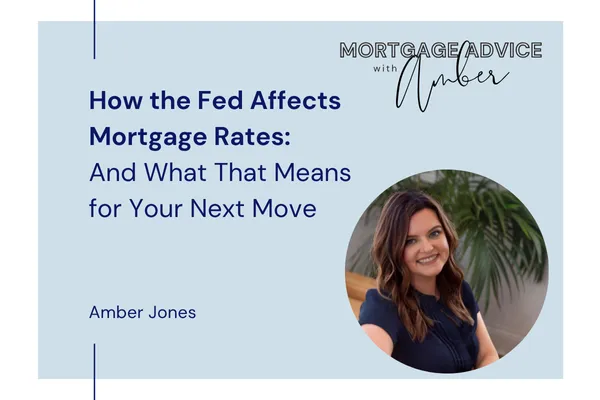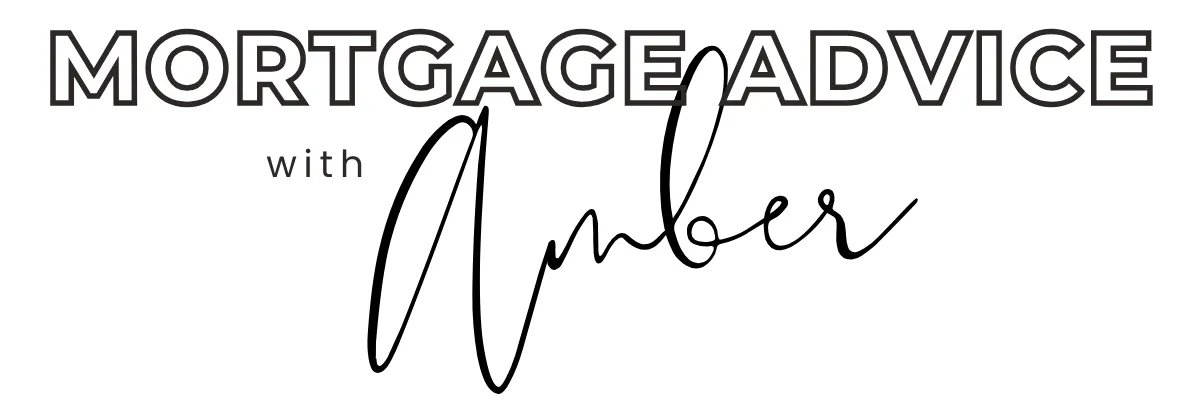
How the Fed Affects Mortgage Rates — And What That Means for Your Next Move
Have you ever found yourself refreshing the news, wondering what the Federal Reserve is going to do next — and how that might impact your mortgage rate?
🎥 Prefer to watch instead of read? Check out the video version below.
Whether you already own a home or you're looking to purchase soon, it can feel like the Fed’s decision is the one thing that will make or break your timing. But here’s the truth most people don’t realize:
👉 Mortgage rates often move before the Fed actually does.
Understanding why that happens could be the difference between sitting on the sidelines or confidently making your next financial move.
Let’s break it all down — simply, clearly, and without jargon — so you can decide what’s right for you.
What Exactly Is the Fed Funds Rate?
The Fed funds rate is the short-term interest rate that banks charge each other to lend money overnight. It’s not the same thing as a mortgage rate, but it does send signals that ripple through the entire financial system.
When inflation is running high or the economy is overheating, the Fed raises this rate to cool things down. That makes borrowing more expensive — whether it’s for credit cards, business loans, or auto financing. And when money is more expensive to borrow, people tend to spend less.
But when the economy needs stimulation, the Fed can cut rates to make borrowing cheaper — encouraging more activity, investment, and consumer confidence.
So, what does this have to do with your mortgage rate?
Do Mortgage Rates Follow the Fed?
Not directly.
Mortgage rates are tied more closely to long-term bond yields — especially the 10-year Treasury yield and mortgage-backed securities (MBS) — not the short-term rate the Fed adjusts.
That said, the Fed's tone and direction influence how investors view inflation and the overall economy, which in turn affects bond markets... and that’s what moves mortgage rates.
💡 Quick Example:
If the market expects the Fed to cut rates soon, mortgage rates might already drop before the actual announcement.
If the Fed ends up doing exactly what was expected, mortgage rates might not budge — because it was already “baked in.”
But if the Fed surprises the market? That’s when you’ll likely see a sharper, more immediate reaction in mortgage rates.
Want to Know What the Market Expects? Use This Tool
There’s a tool I love that’s free and available to the public: CME FedWatch Tool.
It shows what investors are predicting for the upcoming Fed meetings — whether they expect a rate hike, a cut, or no change at all.
If there’s a 90% chance of a rate hold or cut already priced in, mortgage lenders have already adjusted their rates accordingly. So if you’re holding out for a better rate after the Fed’s next meeting, you might be waiting for a change that’s already been accounted for.
So What Really Moves Mortgage Rates?
You may have heard financial pros talk about the bond market. Here’s the simple version:
The bond market is where investors buy and sell debt — including Treasury bonds and mortgage-backed securities.
When investors buy bonds, prices go up and yields (interest rates) go down — which can bring mortgage rates down.
When investors sell bonds (often to move into riskier assets like stocks), bond prices fall and yields rise — pushing mortgage rates up.
Here’s how investor psychology plays into it:
🟢 Confidence in the economy? Investors move into stocks → mortgage rates may rise
🔴 Uncertainty or fear? Investors seek the safety of bonds → mortgage rates may fall
So while the Fed influences the direction of things, the bond market sets the pace for your mortgage rate.
What This Means If You Bought in 2023
Let’s say you bought your home in 2023 with a 2-1 buydown — a popular strategy at the time because the 30-year fixed rate was sitting above 7% for months.
According to Freddie Mac, mortgage rates peaked at 7.79% during the week of October 27, 2023. If your temporary rate is set to adjust soon, this could be a smart window to explore refinancing options — while rates are still below those 2023 highs.
📝 Pro Tip: Timing your refinance before the market reacts to unexpected Fed or inflation data could save you thousands over the life of your loan.
What If the Fed Surprises the Market?
When the Fed does something unexpected — like holding rates steady when a cut was widely expected, or signaling more hikes when the market thought they were done — that’s when we see the biggest mortgage rate swings.
Remember, it’s not always about what the Fed did, but whether they matched expectations.
So if you're waiting for the Fed’s next move to decide whether to buy or refinance, know this:
✅ If the Fed does what the market expects: Rates probably won’t change much
❌ If the Fed surprises: Rates could jump — or drop — quickly
Should You Wait for the Next Fed Meeting?
Waiting might make sense in some cases, but many consumers don’t realize they’re gambling with something far less predictable than it seems.
By the time the Fed announces a move, the mortgage market may have already responded — days or even weeks in advance.
🔑 Here’s what you can do instead:
Review your current loan and check your temporary buydown schedule
Monitor your credit score and debt-to-income ratio
Explore refinance options now while you still have leverage
Stay tuned to bond market trends, not just Fed headlines
Talk to a certified mortgage advisor (like me!) to weigh your real-time options
Expert Insight: Amber Jones, Certified Mortgage Advisor
“You don’t need to wait for the next Fed meeting to take action. You can start preparing now by reviewing your loan, checking your credit, and planning your next move before rates or market conditions change again.”
With over 20 years of experience in residential lending, I study how markets, guidelines, and timing work together to create opportunities for homeowners and buyers. My mission is simple:
Your strategy should fit your story — not the other way around.
Whether it’s comparing fixed-rate options, optimizing a refinance, or solving for a financial challenge, I’m here to help you make confident, informed decisions.
Ready to Talk Strategy?
If you're currently stuck in "wait and see" mode, you don’t have to navigate this alone. Let’s have a 15-minute conversation to talk through:
What you're currently facing
What the market is signaling
What the smartest next step could look like for you
📅 Book a call at a time that works for you. 👉www.loansbyamberjones.com/book-a-call

